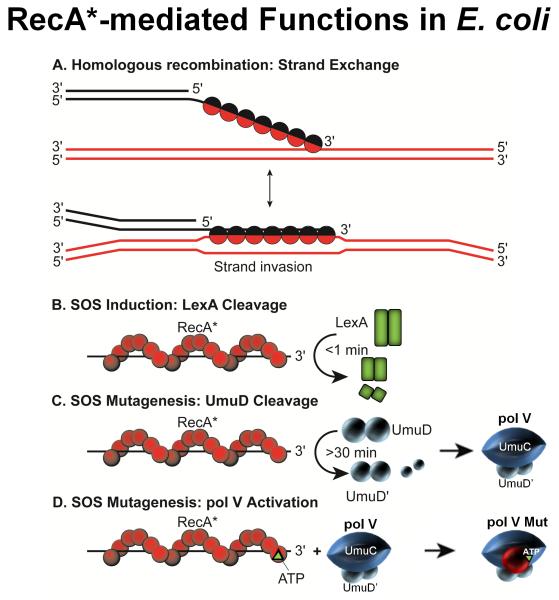Fig. 3.
The four cellular functions of the RecA protein in E. coli. A: RecA protein is involved in many aspects of recombinational DNA repair, and promotes a variety of DNA strand exchange reactions in the context of this function. One key type of reaction is shown – DNA strand invasion. In this process, RecA forms a filament (RecA*) on the 3′ end of a single-stranded DNA, aligns that DNA with its complement in a duplex DNA, and pairs the bound DNA with the complementary strand of the duplex (displacing the other duplex strand). B: The autocatalytic cleavage of LexA repressor occurs only in the presence of RecA* filaments. Since these filaments generally do not form except when the number of single strand DNA gaps is increased as a result of excessive DNA damage, LexA cleavage and the accompanying SOS system induction generally occur only in response to such damage. In the presence of RecA* filaments, LexA cleavage occurs rapidly. C: RecA* is required for the autocatalytic cleavage of the UmuD protein to form active UmuD'. This reaction is much slower than LexA cleavage and occurs >30mins after DNA damage. D: A RecA monomer and a molecule of ATP are transferred to pol V from the 3′-proximal end of a RecA* filament to form the active pol V Mut.

